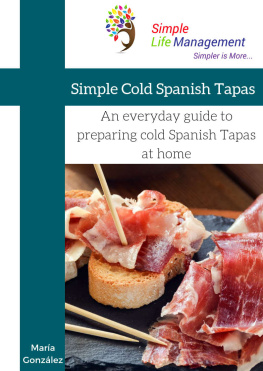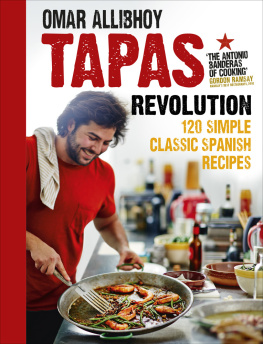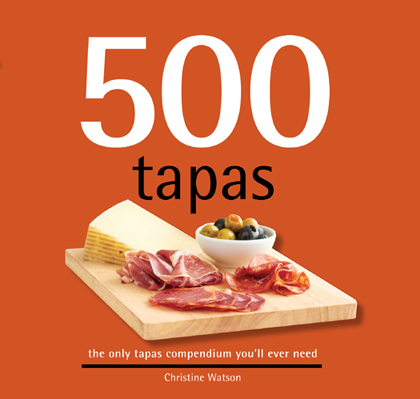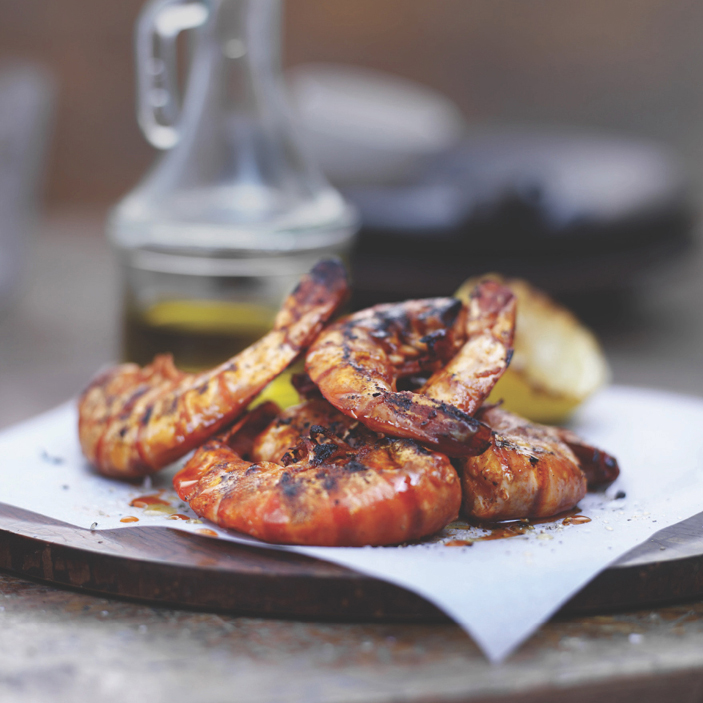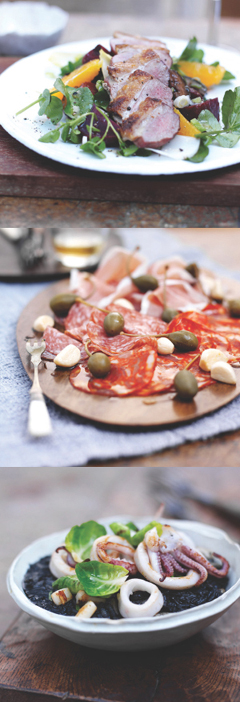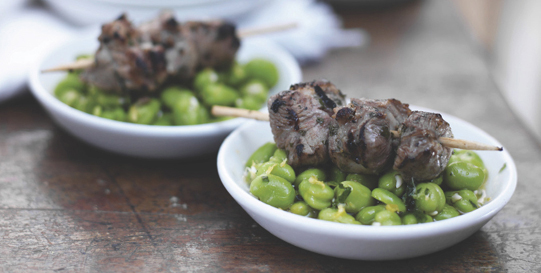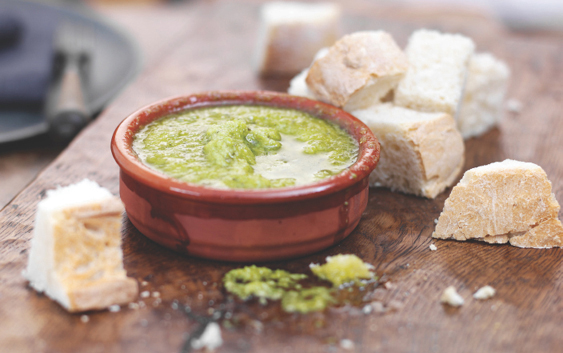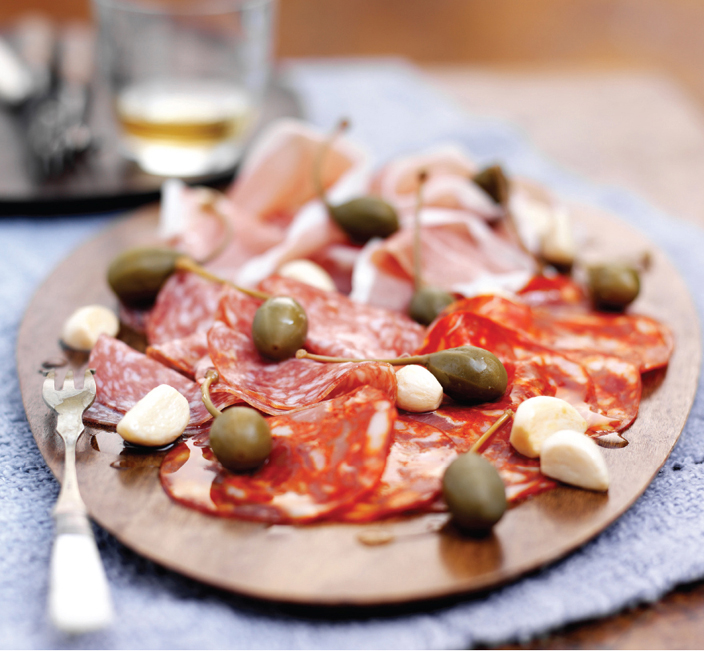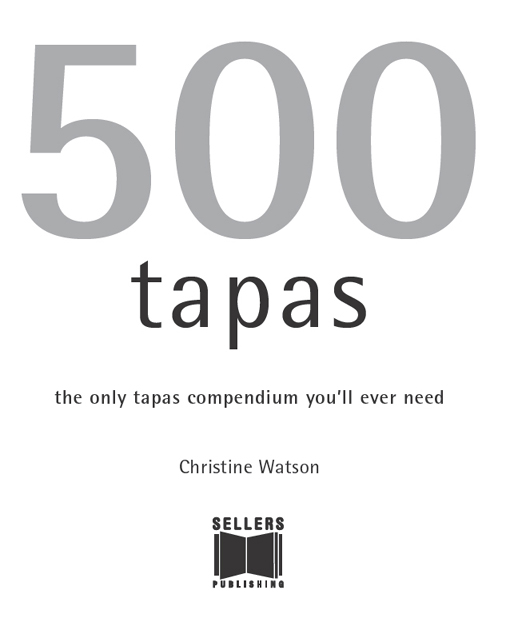
A Quintet Book
Published by Sellers Publishing Inc.
161 John Roberts Road, South Portland, Maine 04106
Visit our Web site:
e-ISBN: 978-1-4162-0730-6
500 Tapas copyright 2013 Quintet Publishing Limited. All rights reserved under International and Pan-American copyright conventions. By payment of the required fees, you have been granted the nonexclusive, nontransferable right to access and read the text of this e-book onscreen. No part of this text may be reproduced, transmitted, downloaded, decompiled, reverse engineered, or stored or introduced into any information storage and retrieval system, in any form, by any means, whether electronic or mechanical, now known or hereinafter invented, without the express written permission of Sellers Publishing, Inc. e-books.
March 2013
This book was designed and produced by
Quintet Publishing Limited
6 Blundell Street
London N7 9BH
United Kingdom
Food Stylist: Georgie Besterman
Photographer: lan Garlick
Art Director: Michael Charles
Editorial Assistart: Holly Willsher
Managing Editor: Donna Gregory
Publisher: Mark Searle
contents
introduction
What could be more evocatively Spanish than to take refuge from the sun with a fortifying drink and to nibble at some fresh, tastebud-tingling, perfect tapas? Tradition holds that tapas was originally a slice of bread or ham used as a lid to keep insects out of drinks, hence the speculation that tapas is derived from the verb tapar, to cover.
However it started, tapas is now a staple of the Spanish bar experience, where mouthfuls of delicious treats, mostly on toasts or carvings of bread, are served with traditional toppings like morcilla and piquillo peppers or pts and cured meats with capers.
Yet this is by no means where tapas ends. The notion of perfect and delicious little bar snacks has now taken wing from its humble beginnings, developing into a worldwide gastronomic delight perceptively different from the usual restaurant experience. Still essentially Spanish in its compositions of herbs, seasonings, and ingredients, tapas has become more luxurious and decadent while still maintaining the feel of convivial food.
Now that the popularity of tapas has become a worldwide trend, it is possible to observe an evolution in its styles. It has become feasible to take almost any popular meal, minimize it down to a single tasting-sized portion, and presto, a new tapas has sprung from the void. In this book you will find examples of this, such as a ballotine of rabbit on white beans, and lightly spiced quail pieces with a pomegranate sauce.
Tapas and the dynamic of sharing food has created an amazing assortment of large, one-pot dishes, specially styled as a focal point, around which a group can sit and chat, scooping off mouthful-sized portions as the mood takes them. Such examples of this are slow-roasted lamb shoulder with pomegranate salad, and crisped pork belly with slow-cooked beans. Can you imagine a more enticing shared delight than a party pulling apart these aromatic and tender meats in good company with excellent wine?
The other style to emerge in tapas is what to all intents and purposes appears to be a large plated serving of food a meal for one. On further inspection, these dishes are always cunningly created to be shared such as a rare ribeye steak served with polenta fries and piquillo peppers, or a beautifully pan-fried piece of chicken in a nest of truffled gnocchi. Certainly its more fun to have lots of plates on the table and sample a little from each than to have just one large meal to oneself.
Tapas is all about sharing in so many ways. It is not just a food genre, it is a means for gathering and convening, of drinking wine, talking, and indulging together on something that is just a little bit special. I hope you have a wonderful time exploring the world of tapas with 500 Tapas.
ingredients
olive oil
Spanish olive oils are unique. They have a deepness and richness unlike many others and are such an important part in Spanish cooking. I would find a good light one for simple frying and cooking, and a really good extra-virgin olive oil for dipping, making dressings, emulsions, and richer sauces.
smoked paprika
Smoked paprika is one of the most Spanish of all the spices. Its bright red color just screams Spain! Spanish paprika (pimentn) is available in three versions mild (pimentn dulce), moderately spicy (pimentn agridulce), and very spicy (pimentn picante).
saffron
Saffron is a spice that is simply the stamen of the saffron crocus. It is the most expensive spice in the world. It has a soapy bitter taste when used in abundance and dyes the food bright yellow, but used sparingly it adds a warmth and aroma to a dish.
piquillo peppers
The piquillo pepper is a variety of chile traditionally grown in northern Spain. Its name is derived from the Spanish for little beak. These peppers are roasted over embers, which gives them a distinct sweet, spicy flavor, more similar to bell peppers than chile peppers, despite their small size. They are then peeled and seeded by hand, before being packed into jars.
pimientos de padrn
Pimientos de Padrn are small green peppers roughly the size of your thumb. Theyre fried in olive oil, salted, and served at many tapas bars in Spain. Besides being salty and sweet, most people eat pimientos de Padrn for the fun of it. Eating them is considered a form of culinary Russian roulette. Some are sweet. Others are hot enough to blow your mind!
membrillo
This quince jelly is wonderful with cheeses, game, or pt, and it also works well spread with roasted meats and whipped up into aoli.
chorizo
Chorizo is a sausage that comes either fresh or semidry, in which case it must be cooked before eating, or as a sausage that has been cured and hung. Spanish chorizo gets its distinctive smokiness and deep red color from paprika. It is the heart of many Spanish dishes.
morcilla
Morcilla is a Spanish black pudding or blood sausage. What makes it different from other blood sausages is that it has more texture from its rice filling and is a little spicier. For those who arent sure about eating blood pudding, try morcilla. Its one of the best in the world.
anchovies
Salted or vinegared anchovies are a staple of the Spanish diet. If using the salted variety, they can be added to dishes to add seasoning. If you dont think youre a fan, still give them a try. They can be the backbone to the most authentic Spanish flavor.




